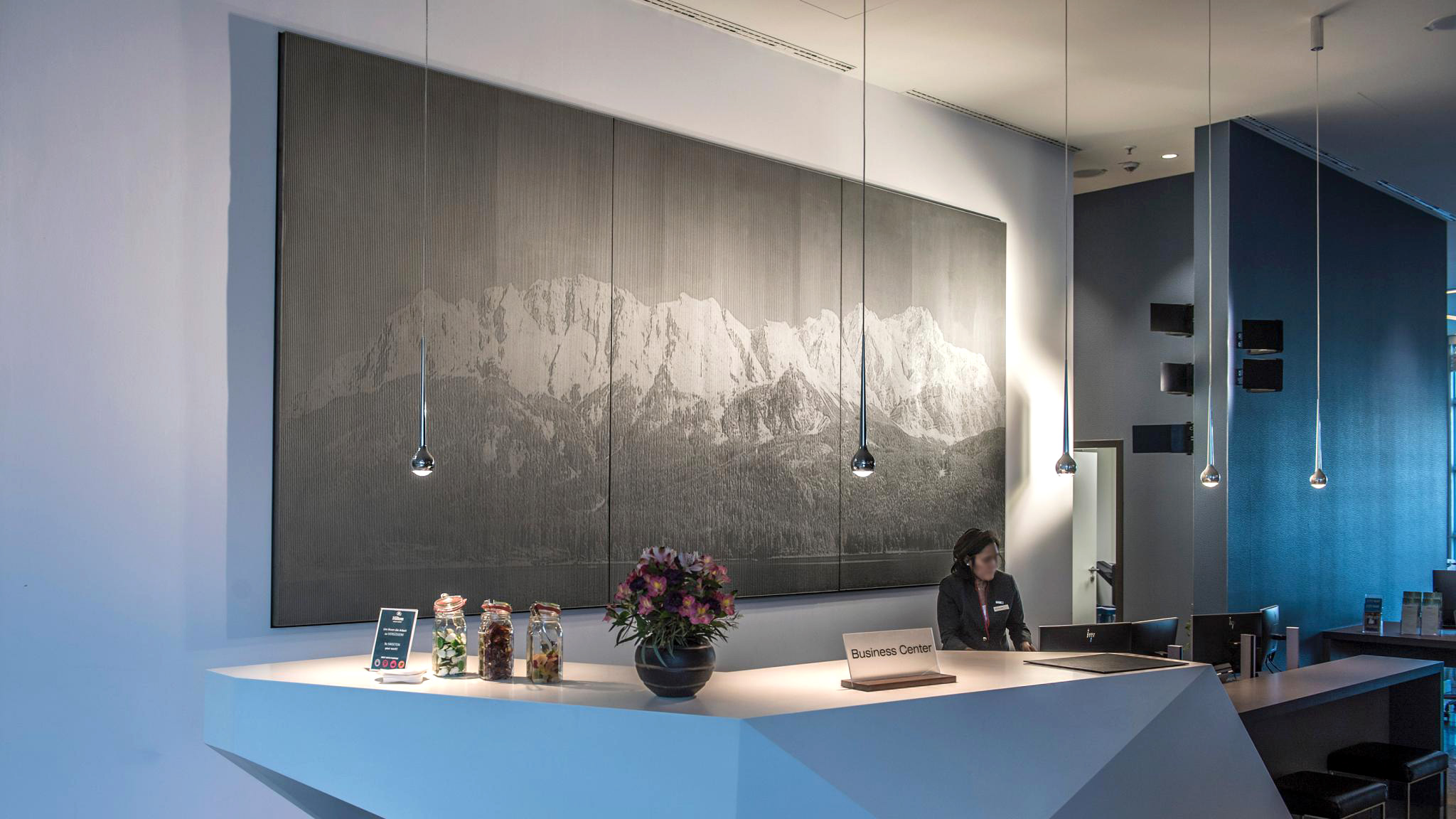Exposed Concrete Art Relief
The Hilton Munich Airport Hotel offers a special view of the Bavarian Alps. Artistically stylized, a 6-metre-long concrete relief in the new foyer of the conference area shows the Wetterstein mountain range with mount Zugspitze.
Those who attend conferences usually don't have time for sightseeing. Whether conference hotels are able to express the peculiarity of a location, even an area, largely depends on whether architects succeed in creating their own original expression for spaces. At Munich Airport, the capacity of the Hilton Munich Airport Hotel was more than tripled as a result of extensive renovation and expansion. The conference area from the 1990s itself was equipped with its own back office and expanded from 5 to 13 conference rooms.
For Claudia Schmitt-Rider of Gumpp Heigl Schmitt Architects from Munich, it was obvious that the new design would also be used in those areas reserved for business conferences. With its blue and white colour design, wooden floors and exposed concrete, the concept aims to relate to the typical Bavarian scenery. In the lobby above the impressive reception counter with its smooth white surface resembling an alpine glacier tongue, the architect wanted to have a natural painting with Bavarian reference installed, but with an extraordinary effect.
Now a 2.5 by 6 metre concrete image illustrates the Wetterstein mountain range with mount Zugspitze in precisely formed relief. This typical countryside scene, which decorates dozens of living rooms in its traditional version, creates an unexpected impression in its stylized form. Depending on the incidence of light and the direction of view, different heights of the concrete relief create a surprisingly different impression. A mural sculpture that expresses both modernity and affinity with the region.
At first, architect Schmitt-Rider had found a photo motif whose stylized conversion into a massive mural was managed in cooperation with the precast concrete parts factory Bachl and the die manufacturer Reckli. Several elements were produced with individually manufactured moulds, which produced relief steps of different heights during casting, and were sampled directly at the later installation site. In the presence of light on site, a decision could be made as to how the highs and lows should ultimately be shaped. "We produced the 5 tonnes heavy art object because it was easier to transport and move when it was installed in three parts," says Wolfgang Paul, Business Unit Manager Concrete Works at Bachl, describing the process involved.
The architect wanted the natural, cement-grey appearance of the concrete. "We produced the elements in exposed concrete quality with CEM 52.5 R cement from HeidelbergCement's Burglengenfeld plant," says Paul. Bachl operates at all locations with the different cements of HeidelbergCement and has many years of experience with structured concrete surfaces and architectural concrete, which is widely used in facades. In the hotel, the heavy wall elements were moved on rollers by a forwarding agency specialized in art transports using a spider crane.
The three concrete elements were embedded into the surrounding wall with five millimeter wide joints, not visibly fixed to a steel structure. "The client and architects were very satisfied with the result," remembers the division manager, for whom the production of the artistic wall sculpture naturally had a different significance than the casting of a floor slab. "We calculated on a time and material basis," he says, "the assembly alone took three days. The artistic expression of the mountain range in concrete is due to the architect's creative imagination.

Exposed Concrete Art Relief, Germany.
HeidelbergCement / Steffen Fuchs

Exposed Concrete Art Relief, Germany.
HeidelbergCement / Steffen Fuchs
